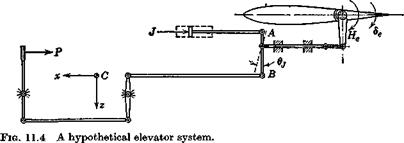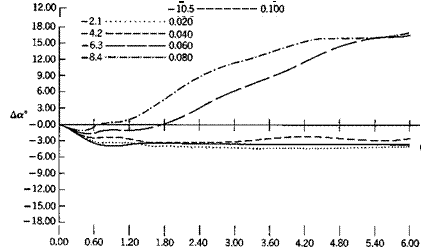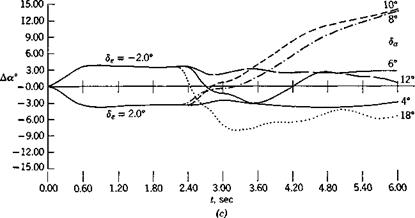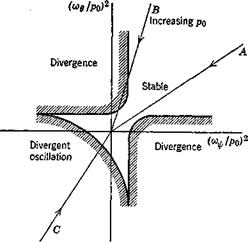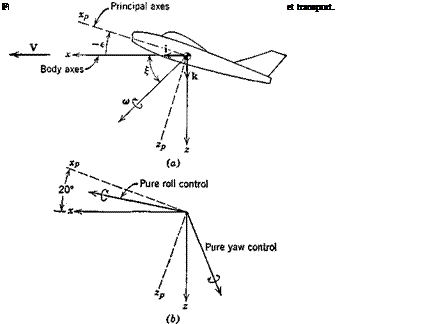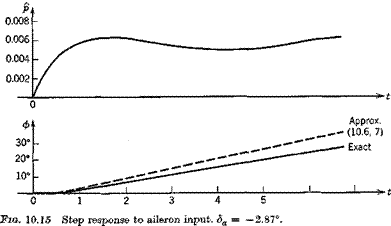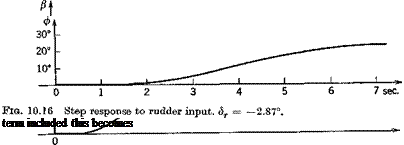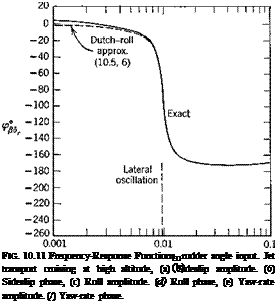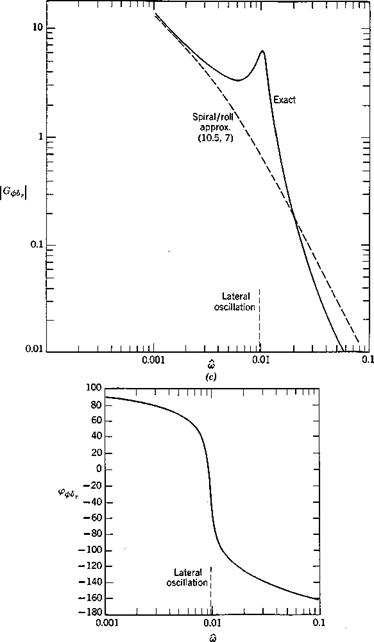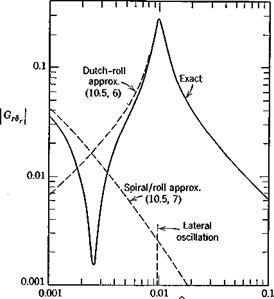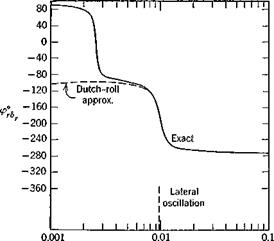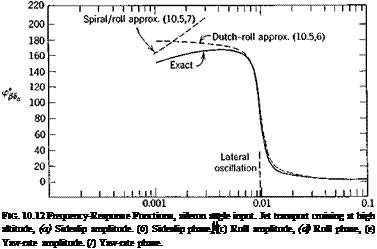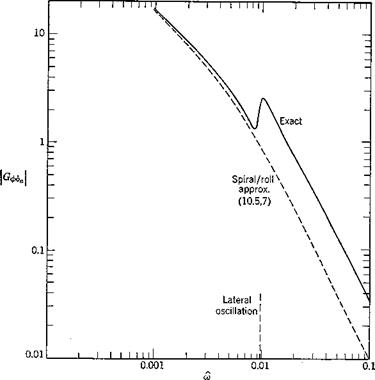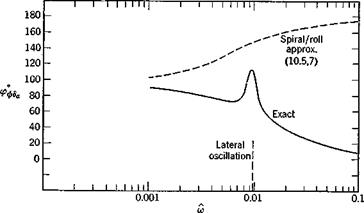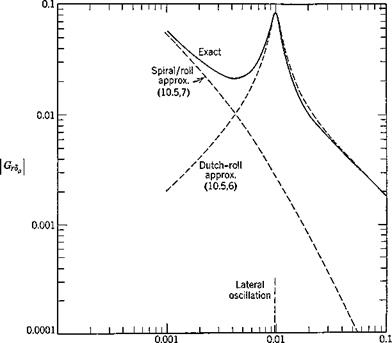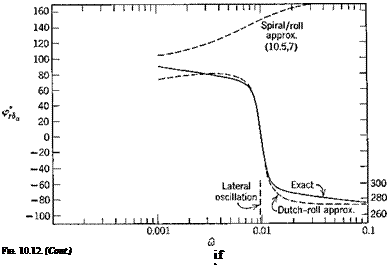Although open-loop responses of the kind studied in some depth in Chapter 10 are very revealing in bringing out inherent vehicle dynamics, they do not in themselves usually represent real operating conditions. Every phase of the flight of an aerospace vehicle can be regarded as the accomplishment of a set task—i. e. flight on a specified trajectory. That trajectory may simply be a straight horizontal line traversed at constant speed, or it may be a turn, a transition from one symmetric flight path to another, a landing flare, following an ILS or navigation radio beacon, homing on a moving target, etc. All of these situations are characterized by a common feature, namely, the presence of a desired state, steady or transient, and of departures from it that are designated as errors. These errors are of course a consequence of the unsteady nature of the real environment and of the imperfect nature of the physical system comprising the vehicle, its instruments, its controls, and its guidance system (whether human or automatic). The correction of errors implies a knowledge of them, i. e. of error-measuring (or state-measuring) devices, and the consequent actuation of the controls in such a manner as to reduce them. This is the case whether control is by human or by automatic pilot. In the former case, the state information sensed is a complicated blend of visual and motion cues, and instrument readings. The logic by which this information is converted into control action is only imperfectly understood,
but our knowledge of the physiological “mechanism” that intervenes between logical output and control actuation is somewhat better (see Chapter 12). In the latter case—the automatic control—the sensed information, the control logic, and the dynamics of the control components are usually well known, so that system performance is in principle quite predictable. The process of using state information to govern the control inputs is known as closing the loop, and the resulting system as a closed-loop control or feedback control. The terms regulator and servomechanism describe particular applications of the feedback principle. Figure 3.5 shows a general block diagram describing the feedback situation. In the present context we regard у as the state vector, H(s) as an operator (linear in the figure, but of course not necessarily so) and є as the control vector. Clearly, since real flight situations virtually always entail closed-loop control, a study of the consequences of closing the loop is in order.
Another factor that cannot be separated from these referred to above is the force amplification or power amplification common in the control systems of large aircraft. As noted in Sec. 6.8, the control forces needed on large high-speed aircraft may exceed the capabilities of human pilots. Thus another dynamic system—powered controls—intervenes between the pilot and the aerodynamic surfaces. Such subsystems are themselves commonly servomechanisms—closed-loop systems that drive the surfaces in response to pilot commands. Thus we are frequently concerned with “loops within loops,” a very common situation. For example, the “outermost” loop might be a guidance loop that controls the error in vehicle position relative to an ILS beam. An inner loop might be a stability augmentation system (treated later in Sec. 11.4) whose purpose is to improve the inherent lateral dynamics of the vehicle and, finally, within this one there may be still another loop associated with the control-surface servo.
Although flight dynamicists (who usually come from an aerospace engineering background) and control engineers (who frequently have a background in electrical engineering) usually communicate adequately on problems of mutual concern, there is often understandably some difference in their points of view. This is illustrated somewhat facetiously in Fig. 11.1. At one extreme, the control engineer may overemphasize the many elements that comprise the control system, and tend to minimize the role of the dynamics of the vehicle itself—perhaps replacing all its rich and varied detail with oversimplified approximate transfer functions. At the other extreme, the flight dynamicist may substitute some simple algebraic relations for the entire control system. Neither extreme is right for the final solution of real problems, but both may have their merits for certain purposes. We naturally tend here to the flight dynamicist’s view of the system in the illustrations that follow. For example, it is sometimes very helpful to consider the loop closure as simply modifying some of the existing aerodynamic derivatives, or
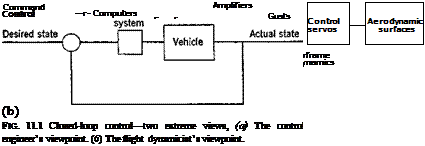 |
adding new ones. Specifically let у be any nondimensional state variable, and let a control surface be displaced in response to this variable according to
the laW Ад = к Ay; к = const (Here к is a simplified representation of all the sensor and control system
dynamics!) Then a typical aerodynamic force or moment coefficient Ga will
be incremented by. _ _ . .
A<?« = Caf Ad
= CagkAy (11.1,1)
This is the same as adding a synthetic increment
№ay = Wat (11.1,2)
to the aerodynamic derivative Ga. Thus if у be yaw rate and 6 be rudder angle, then the synthetic increment in the yaw-damping derivative is
AGnr = kC (11.1,3)
or
which might be the kind of change required to correct a lateral dynamics problem. This example is in fact the basis of the often-applied “yaw damper,” a stability-augmentation feature. Again, if у be the roll angle and 6 the aileron, we get the entirely new derivative
С1ф = kClK (11.1,4)
the presence of which can profoundly change the lateral characteristics.
SENSORS
We have already alluded to the general nature of feedback control, and the need to provide sensors that ascertain the state of the vehicle. When a human pilot is in control, his eyes and kinesthetic senses, aided by the standard flight information displayed by his instruments, provide this information. (In addition, of course, his brain supplies the logical and computational operations needed, and his neuro-muscular system all or part of the actuation.) In the absence of human control, when the vehicle is under the command of an autopilot, the sensors must, of course, be physical devices. As already mentioned, some of the state information needed is measured by the standard flight instruments—air-speed, altitude, rate-of-climb, heading, etc. This information may or may not be of a quality and in a form suitable for incorporation into an automatic control system. In any event it is not generally enough. When both guidance and attitude-stabilization needs are considered, the state information needed may include:
Position and velocity vectors relative to a suitable reference frame.
Vehicle attitude (в, ф).
Rotation rates (p, q, r).
Aerodynamic angles (a, ft).
Acceleration components of a reference point in the vehicle.
The above is not an exhaustive list. A wide variety of devices are in use to measure these variables, from Pitot-static tubes to sophisticated inertial – guidance platforms. Gyroscopes, accelerometers, magnetic and gyro compasses, angle-of-attack and sideslip vanes, and other devices all find applications as sensors. The most common form of output is an electrical signal, but fluidic devices (ref. 11.1) are increasingly receiving attention. Although in the following examples we tend to assume that the desired variable can be measured independently, linearly, and without time lag, this is of course an idealization that is only approached but never reached in practice. Every sensing device together with its associated transducer and amplifier is itself a dynamic system, with characteristic frequency response, noise, nonlinearity, and cross-coupling. These attributes cannot finally be ignored in the design of real systems, although one can usefully do so in preliminary work. As an example of cross-coupling effects, consider the sideslip sensor assumed to be available in the stability augmentation system of Sec. 11.4. Assume, as might well be the case, that it consists of a sideslip vane mounted on a boom projecting forward from the nose. Such a device would in general respond not only to ft = sin-1 (»/ V) but also to atmospheric turbulence (side gusts), to roll and yaw rates, and to lateral acceleration ay at the vane hinge. Thus the output signal would in fact be a complicated mathematical function of several state variables, representing several feedback loops, rather than being simply proportional to /3 as assumed in the example. The objective in sensor design is, of course, to minimize all the unwanted extraneous effects, and to provide sufficiently high frequency response and low noise in the sensing system.
This brief discussion serves only to draw attention to the important design and analytical problems related to sensors, and to point out that their real characteristics, as opposed to their idealizations, need finally to be taken into account in design.











